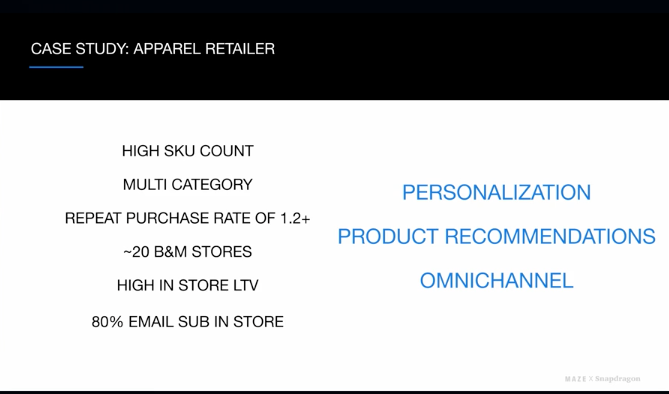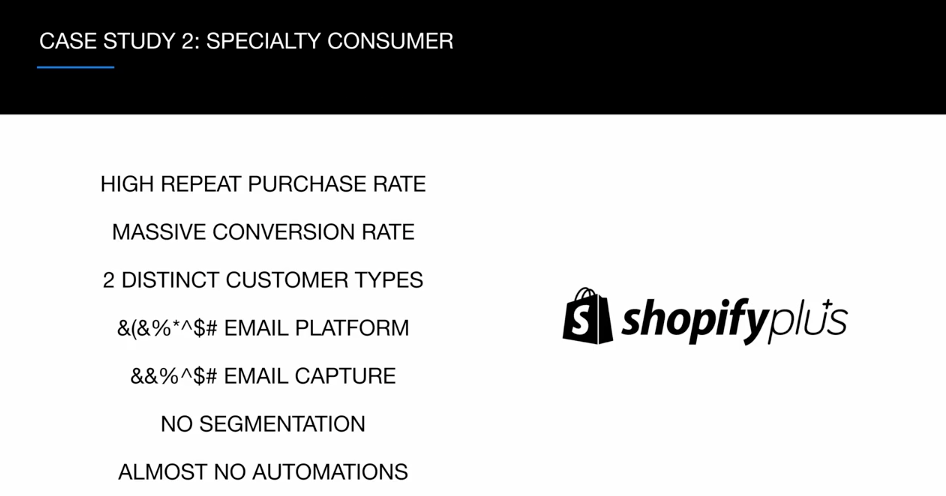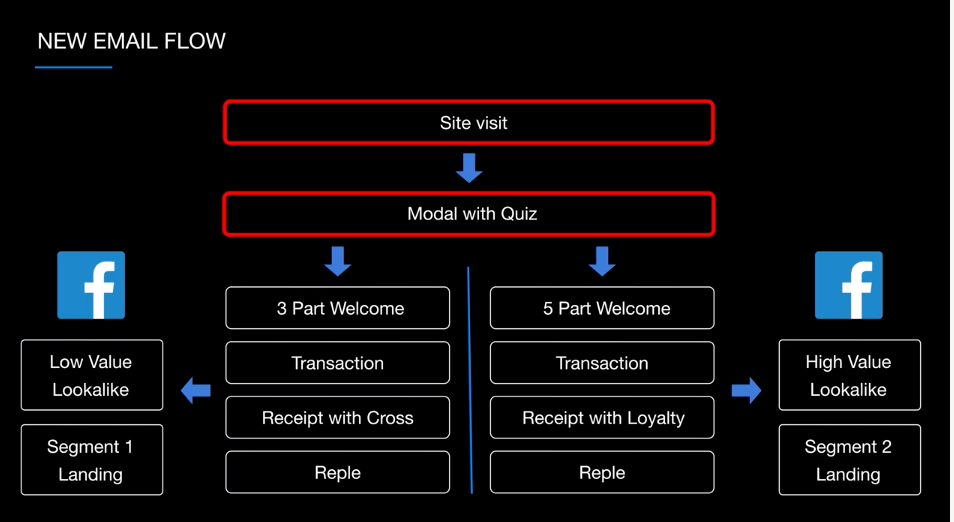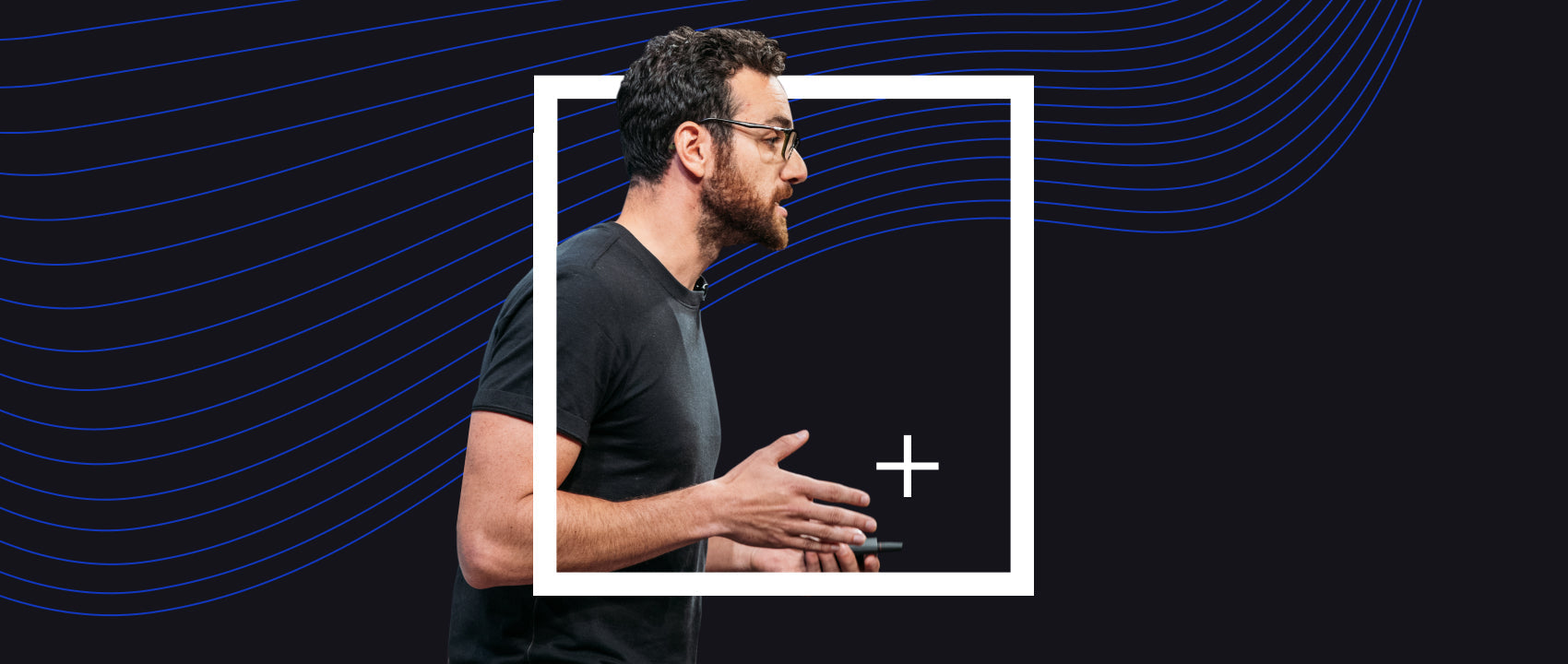This talk was originally presented at Commerce+ in 2019 in New York. In this series, we've pulled together relevant talks from our past events in Sydney, London, and New York City.
What is Commerce+
For the last two years, Shopify Plus has hosted Commerce+, a global thought leadership conference that brought together industry leaders to share their knowledge and best practices in the ever-evolving world of commerce.
During this talk, Zack Werner, Founder & CEO at the Maze Group, shares about how ecommerce teams can communicate key information to investors and stakeholders in ways they’ll understand.
This transcript has been edited for clarity.
Werner: I’m Zack, the Founder and CEO of The Maze Group, a digital consultancy that creates enterprise value for companies by using technology, data, and ecommerce tactics creatively. We work across a bunch of different industries, selling various things. We’ve carved out a very specific niche for ourselves, regardless of the products that we're selling.
Werner: Almost all of our clients are either backed by private equity or they're owned by a public holding company. While a lot of venture-backed companies are encouraged to grow at all costs because they're valued at a multiple of revenue, all of our clients are valued at a multiple of EBITDA (Earnings Before Interest Tax Depreciation and Amortization)—I use this term a lot as a proxy for profit, rather than just growth. We've gotten so deep onto the private equity side of things that we've actually become private equity owners ourselves through a partnership with Snapdragon Capital. Since forming this partnership, we've acquired about 40 brands, 20 of which will be on Shopify Plus by the end of 2020.
Werner: At the end of the day, these are our clients. If you think about who the executives at these companies are and who the partners are, they're financial professionals, not ecommerce operators. That means an incredibly different perspective, and with that comes an incredibly different set of vocabulary. Which leads us to our subject today, lost in translation. On the other side of the table, there's a whole set of different terms that roll up all of the work that we do into effectively KPIs that are the lifeblood of the company from a financial perspective. But again, since they're very, very different words, there's often this weird communication gap.
Across all of the companies that we've seen, a huge number of problems arise, from practitioners and founders trying to have a conversation to get investment into the things that we're doing on their side of the table. To be very clear, it is not the board's job to understand what we do, just like it's not my job to do creative work or deal with real estate in our portfolio. It's their job to understand the fundamental financial backbone of the company and keep it running on that side of things, not be fluent in today's ecommerce vernacular.
Werner: Despite the fact that we all have the same goal, this mismatch in the communication creates a lot of tension and it's just really frustrating. What ends up happening is this hazardous cycle that I think a lot of people have seen. You're operating some really old legacy system and you're trying to get things out the door, but it doesn't work, so there's very little revenue. It’s my firm belief that it is our job as practitioners to break this cycle and cross that language barrier. To that point, the name of this talk that we couldn't put in your handbook is justifying to your board and CEO what you already think is really obvious. Maze makes a living bridging this gap, and we're going to show you two real examples of how we do it.

Werner: We have a customer that is an apparel retailer: They have a high SKU count, many, many categories, some repeat purchases, and about 20 brick-and-mortar stores. The lifetime value for the customers that go in-store is incredibly high, and for some reason, 80% of people that go into the store end up subscribing to emails. That means a lot of things: If you have a bunch of repeat purchases and personalizing, you have a lot of data—that means you can actually get people to purchase more things later and have a higher conversion rate. We have a lot of categories, which means that we can actually use product recommendations to cross sell people that might've otherwise only come in for one object.
So let's continue to translate that, because the platform that this customer was on when we came in wasn’t good. The technology wasn't capable of doing this, so we brought in new technology partners to integrate with their old system so that we could actually employ these tactics. The ones that we recommended are Dynamic Yield and mParticle. Dynamic Yield is an amazing platform that does product recommendations and on-site testing. Basically if you leave a website and then come back and it says, "Hey Zach, here's the objects you looked at.” mParticle is what's called a customer data platform or a hub that attaches all of your different data sources to each other.
Werner: You need to get the budget for this, so what you or we say is, "I want to integrate two platforms that will allow my team to dynamically personalize our website and create cross-channel marketing automations using offline transactions to drive digital campaigns.” Here's where the problem begins, because that's not what they hear. This is what they hear: This person wants to spend millions of dollars to accomplish something I don't understand at all, and they should be able to do it without this new shiny toy that cuts into our margins.
Werner: To break through this barrier, Maze uses an incredibly detailed financial model. Again, the goal here is to translate: I've used a lot of buzzwords and in ecommerce, we use a lot of buzzwords like personalization, omnichannel, and conversion rate. We get really frustrated when those aren't understood by non-technical members of the team.
But at the end of the day, these buzzwords and technical terms have a real impact on the mathematical output of our business. Take product recommendations, for example. Let's assume we're putting product recommendations in the cart when you're checking out, and you're putting it on product detail pages. What that will do is get people to put more stuff in their cart, which increases our average order value, direct translation.
A/B testing and personalization is a buzzword that refers to altering the website to make sure that the user experience is consistently evolving and being effective. With Dynamic Yield, we're able to A/B test more effectively and personalize more effectively, so we can actually increase the rate at which conversion rate increases.
Werner: Because we can now take advantage of offline data inside of our CRM systems, inside of our marketing, inside of our targeting, all of those in-store purchasers that might not be in the area or for a number of different reasons not be walking into a store, we can now target for online transactions. Which means that the number of transactions that eventually occur is going to be higher. Because our conversion rate is increasing, our cost of acquiring a customer is going down. Effectively, if you are spending a bunch of money driving people into a website that isn't working, it's more expensive. That's getting better, our media budgets are therefore going up and so our traffic is going up as well. Lastly, our total incremental cost annually is about $500,000 a year.
Werner: This model does a bunch of stuff and then it calculates what the EBITDA uplift will be in this scenario without mParticle and Dynamic Yield, and [what it will be] with it. So you can see here the opportunity size in terms of actual EBITDA uplift on a 24-month period is $5.58 million. This business trades at eight times EBITDA, which means that this $5.58 million of cash we just generated is actually over $44 million of total enterprise value. This is something that your board, your CEO, and your investors will certainly understand.

Case study two is a Shopify Plus customer. They have a high repeat purchase rate, massive conversion rate, and two very distinct types of customers. They also have a bad email platform and pretty much no capture, and that keeps them from being able to segment their audiences. There's also really no automation to speak of.

Werner: When we hear repeat purchase, we generally focus on email, because that means that we can reach customers that we know are interested in purchasing the product and it's significantly cheaper than retargeting them on Facebook. This was their old email flow with their old email platform. Somebody visited the website and then the email address was only captured after they bought something. A receipt email went out, which fortunately always did, but this company only sent a quarterly sales blast and sometimes an abandoned cart email if they were on the right browser, because it was broken on most of them.

Werner: [We did this] with Shopify Plus and Klaviyo, an email service provider that's really easy to use and integrates directly with Shopify Plus with a lot of automation building capabilities, segmentation, and product recommendations. This is a very simplified version of the new email flow that we ended up building.
Somebody visits the website and there's a modal with a quiz that pops up, and we'd like to think ours are slightly less annoying than most people’s. But inside of that questionnaire, we actually get customers to segment themselves as soon as they visit our website, that way we don't have to figure it out later. Because of that modal, we're actually able to immediately split customers into two separate segments: One of those segments gets a three-part welcome series and one of them gets a five-part welcome series.
Following that, after the transaction occurs, one of the segments has a cross sell in it and one of them has an invitation to join the loyalty program, because that segment is much more of a direct purchaser and the loyalty seems to work a lot better on them. After that, they both receive replenishment emails, but they're on entirely different cadences because they're different types of customers. After that, we took one segment and created a lookalike audience on Facebook that was different from the others, because we knew that they were significantly higher value [customers].
Werner: Let's translate these effects again. Our platform cost, because Klaviyo and Privy are actually really, really cheap, is only $12,000 a year. Our sessions are increasing because we're sending more emails and we're actually sending better ads. So traffic [is] up. Our conversion rate is increasing because those emails are to loyal customers and the ads are more targeted. Both of those groups of people are actually much more interested in our product by the time they land. Our cross-selling emails and replenishment emails are making people buy stuff more often, so average order value is higher and lifetime value is higher. When all is said and done, this ended up making about $3.2 million in uplift, because it was a smaller business.
Werner: This business trades at a 13 X multiple of EBITDA, rather than the eight in the previous business. When all is said and done, we've just created $41.1 million of total enterprise value by only spending $12,000 on software costs.
Speaking two different languages can be incredibly frustrating. We spend a lot of time in France because of our clients, and very frequently they'll start speaking French to me. I'll tell them I don't speak French, but for some reason, they'll just speak French louder and slower. Does anybody ever have that?
That's exactly what ends up happening in these board meetings, but everybody thinks they're making sense. It's something that is completely avoidable, and quite frankly, everybody that's in that room needs to work in harmony to create an amazing outcome for the company, which is everybody's goal.
My hope is that we as practitioners can continue to bridge that divide by speaking a language that crosses the table.





